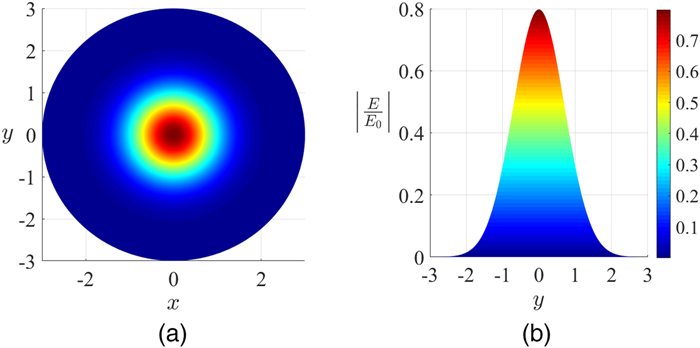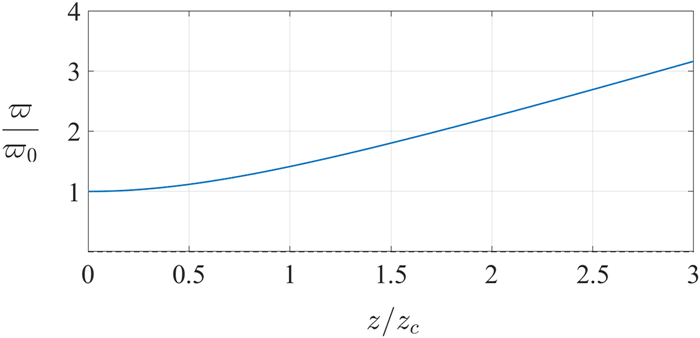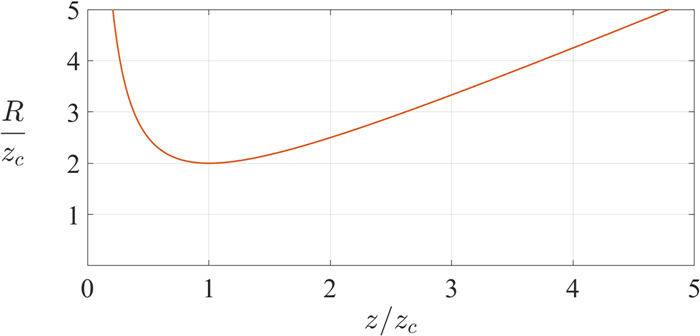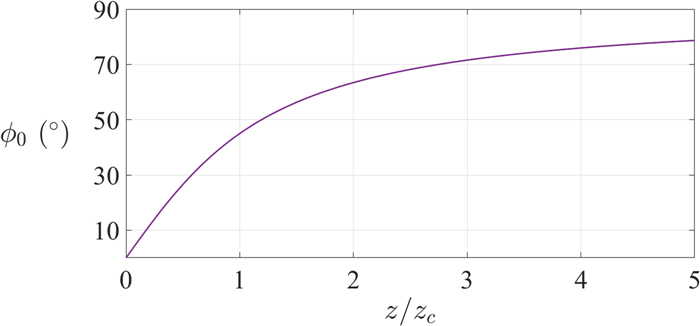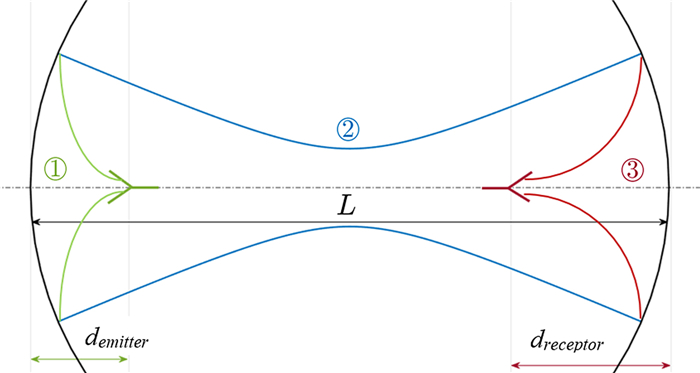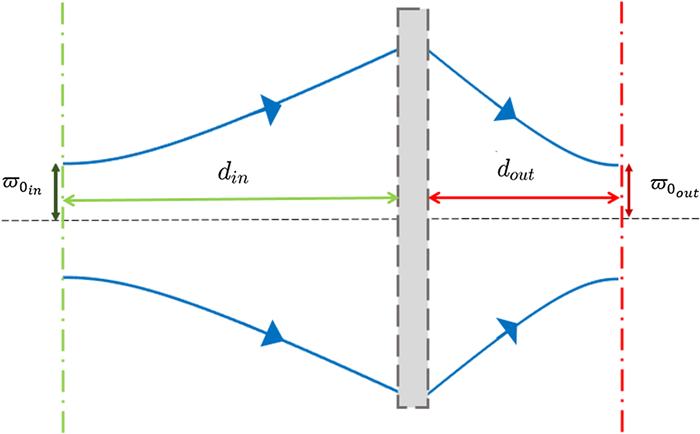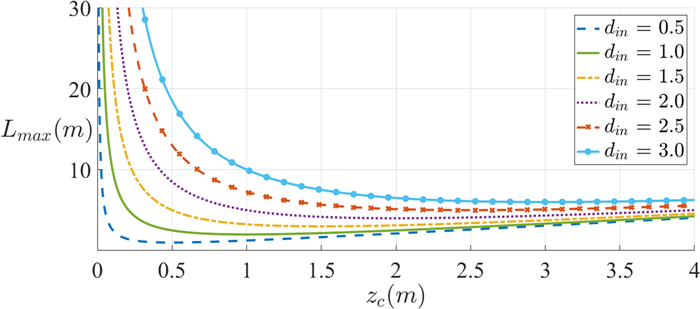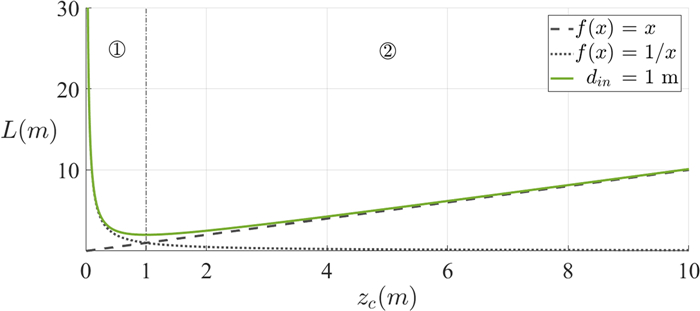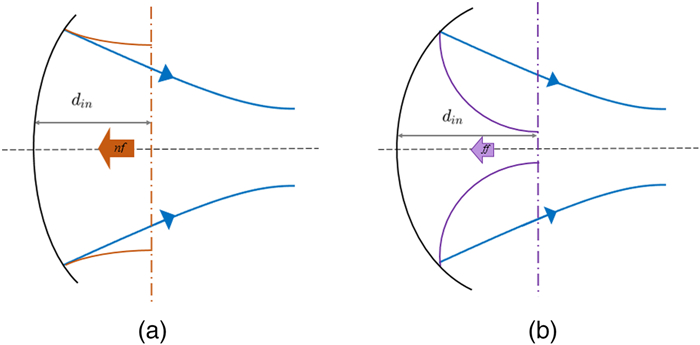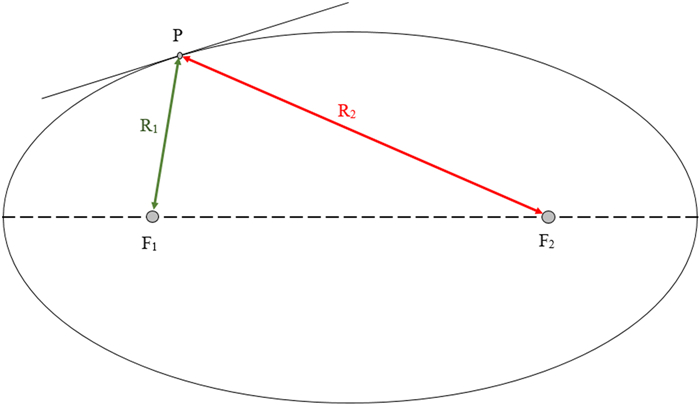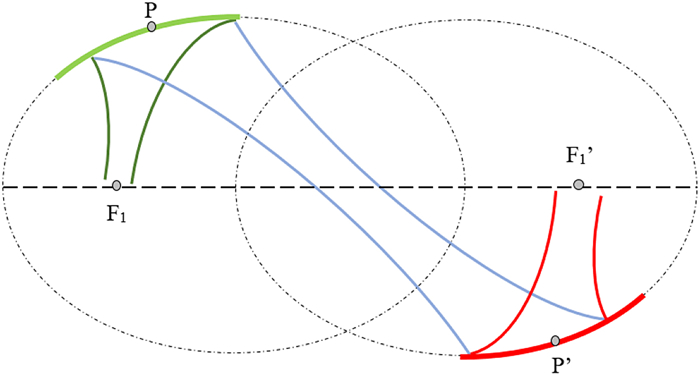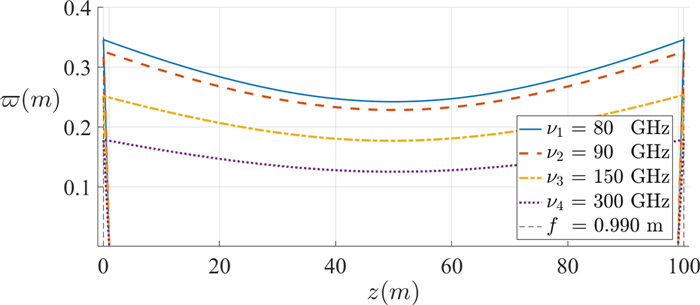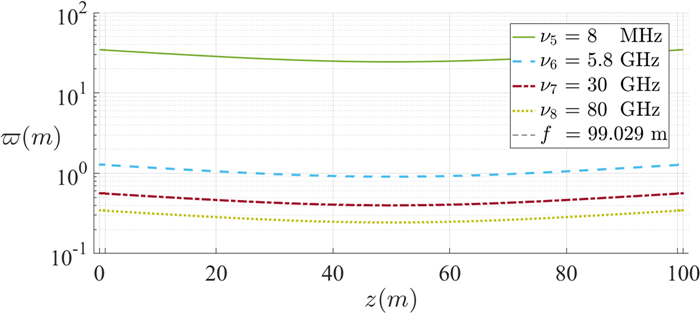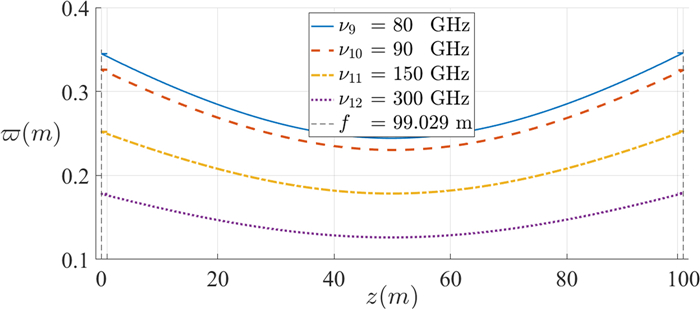Quasi-optical analysis of a double reflector microwave antenna system
-
1.
Physics Department, University of Coimbra, Rua Larga, P-3004 516, Coimbra, Portugal. Phone: +351 91 906 18 24
-
2.
Institute of Telecommunications, University of Aveiro, 3810-193, Aveiro, Portugal
More Information
-
Author Bio:
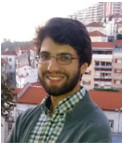 Ricardo André Mendes Pereira
Ricardo André Mendes Pereira graduated from the University of Coimbra in 2017 with an M.Sc. degree in Physics Engineering, specializing in Instrumentation. He currently works as a Research Assistant at the same institution, studying spacecraft simulation, modeling, and control. His research interests are electromagnetism, especially wireless power transfer, space, and nuclear physics.
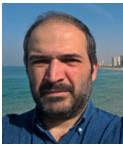 Nuno Borges Carvalho
Nuno Borges Carvalho (S′97–M′00–SM′05–F′15) was born in Luanda, Angola, in 1972. He received the Diploma and Doctoral degrees in Electronics and Telecommunications Engineering from the University of Aveiro, Aveiro, Portugal, in 1995 and 2000, respectively. He is currently a Full Professor and a Senior Research Scientist with the Institute of Telecommunications, University of Aveiro and an IEEE Fellow. He coauthored Intermodulation in Microwave and Wireless Circuits (Artech House, 2003), Microwave and Wireless Measurement Techniques (Cambridge University Press, 2013) and White Space Communication Technologies (Cambridge University Press, 2014). He has been a reviewer and author of over 200 papers in magazines and conferences. He is an associate editor of the IEEE Microwave Magazine and Cambridge Wireless Power Transfer Journal and former associate editor of the IEEE Transactions on Microwave Theory and Techniques. He is the co-inventor of six patents. His main research interests include software-defined radio frontends, wireless power transmission, nonlinear distortion analysis in microwave/wireless circuits and systems, and measurement of nonlinear phenomena. He has recently been involved in the design of dedicated radios and systems for newly emerging wireless technologies. He is the Chair of the IEEE MTT-20 Technical Committee and the past-chair of the IEEE Portuguese Section and MTT-11 and also belongs to the technical committees, MTT-24, and MTT-26. He is also the Vice-chair of the URSI Commission A (Metrology Group). He was the recipient of the 1995University of Aveiro and the Portuguese Engineering Association Prize for the best 1995 student at the University of Aveiro, the 1998 Student Paper Competition (Third Place) of the IEEE Microwave Theory and Techniques Society (IEEE MTT-S) International Microwave Symposium (IMS), and the 2000 IEE Measurement Prize. He is a Distinguished Microwave Lecturer for the IEEE Microwave Theory and Techniques Society.
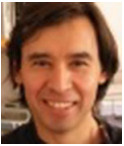 José Pinto da Cunha
José Pinto da Cunha has a Ph.D. in High Energy Physics from the University of Liverpool (UK). His research interests include data analysis, Monte Carlo simulation and event reconstruction, in particular on the optical response of radiation detectors. He has participated in various collaborations on High-energy Physics and Astrophysics and is an Assistant Professor at the Department of Physics of the University of Coimbra, Portugal
-
Corresponding author:
R. A. M. Pereira Email: ricardo6pereira@gmail.com
-
Abstract
By using quasi-optical tools, it is possible to approximate microwave radiation to Gaussian beams, which enables the study of its propagation and coupling to different components. Hence, their usefulness for wireless power transfer and rapid system design. In this paper, a system composed of two reflectors is analyzed both theoretically and by discussing two cases where quasi-optical tools were applied. The near- and far-field regimes were considered and corresponding frequencies of operation, beam radius, and radius of curvature were computed.
-
About this article
Cite this article
Pereira R A M, Carvalho N B, da Cunha J P. 2018. Quasi-optical analysis of a double reflector microwave antenna system. Wireless Power Transfer 5(2): 75-86 doi: 10.1017/wpt.2017.19
|
Pereira R A M, Carvalho N B, da Cunha J P. 2018. Quasi-optical analysis of a double reflector microwave antenna system. Wireless Power Transfer 5(2): 75-86 doi: 10.1017/wpt.2017.19
|









 Ricardo André Mendes Pereira graduated from the University of Coimbra in 2017 with an M.Sc. degree in Physics Engineering, specializing in Instrumentation. He currently works as a Research Assistant at the same institution, studying spacecraft simulation, modeling, and control. His research interests are electromagnetism, especially wireless power transfer, space, and nuclear physics.
Ricardo André Mendes Pereira graduated from the University of Coimbra in 2017 with an M.Sc. degree in Physics Engineering, specializing in Instrumentation. He currently works as a Research Assistant at the same institution, studying spacecraft simulation, modeling, and control. His research interests are electromagnetism, especially wireless power transfer, space, and nuclear physics.  Nuno Borges Carvalho (S′97–M′00–SM′05–F′15) was born in Luanda, Angola, in 1972. He received the Diploma and Doctoral degrees in Electronics and Telecommunications Engineering from the University of Aveiro, Aveiro, Portugal, in 1995 and 2000, respectively. He is currently a Full Professor and a Senior Research Scientist with the Institute of Telecommunications, University of Aveiro and an IEEE Fellow. He coauthored Intermodulation in Microwave and Wireless Circuits (Artech House, 2003), Microwave and Wireless Measurement Techniques (Cambridge University Press, 2013) and White Space Communication Technologies (Cambridge University Press, 2014). He has been a reviewer and author of over 200 papers in magazines and conferences. He is an associate editor of the IEEE Microwave Magazine and Cambridge Wireless Power Transfer Journal and former associate editor of the IEEE Transactions on Microwave Theory and Techniques. He is the co-inventor of six patents. His main research interests include software-defined radio frontends, wireless power transmission, nonlinear distortion analysis in microwave/wireless circuits and systems, and measurement of nonlinear phenomena. He has recently been involved in the design of dedicated radios and systems for newly emerging wireless technologies. He is the Chair of the IEEE MTT-20 Technical Committee and the past-chair of the IEEE Portuguese Section and MTT-11 and also belongs to the technical committees, MTT-24, and MTT-26. He is also the Vice-chair of the URSI Commission A (Metrology Group). He was the recipient of the 1995University of Aveiro and the Portuguese Engineering Association Prize for the best 1995 student at the University of Aveiro, the 1998 Student Paper Competition (Third Place) of the IEEE Microwave Theory and Techniques Society (IEEE MTT-S) International Microwave Symposium (IMS), and the 2000 IEE Measurement Prize. He is a Distinguished Microwave Lecturer for the IEEE Microwave Theory and Techniques Society.
Nuno Borges Carvalho (S′97–M′00–SM′05–F′15) was born in Luanda, Angola, in 1972. He received the Diploma and Doctoral degrees in Electronics and Telecommunications Engineering from the University of Aveiro, Aveiro, Portugal, in 1995 and 2000, respectively. He is currently a Full Professor and a Senior Research Scientist with the Institute of Telecommunications, University of Aveiro and an IEEE Fellow. He coauthored Intermodulation in Microwave and Wireless Circuits (Artech House, 2003), Microwave and Wireless Measurement Techniques (Cambridge University Press, 2013) and White Space Communication Technologies (Cambridge University Press, 2014). He has been a reviewer and author of over 200 papers in magazines and conferences. He is an associate editor of the IEEE Microwave Magazine and Cambridge Wireless Power Transfer Journal and former associate editor of the IEEE Transactions on Microwave Theory and Techniques. He is the co-inventor of six patents. His main research interests include software-defined radio frontends, wireless power transmission, nonlinear distortion analysis in microwave/wireless circuits and systems, and measurement of nonlinear phenomena. He has recently been involved in the design of dedicated radios and systems for newly emerging wireless technologies. He is the Chair of the IEEE MTT-20 Technical Committee and the past-chair of the IEEE Portuguese Section and MTT-11 and also belongs to the technical committees, MTT-24, and MTT-26. He is also the Vice-chair of the URSI Commission A (Metrology Group). He was the recipient of the 1995University of Aveiro and the Portuguese Engineering Association Prize for the best 1995 student at the University of Aveiro, the 1998 Student Paper Competition (Third Place) of the IEEE Microwave Theory and Techniques Society (IEEE MTT-S) International Microwave Symposium (IMS), and the 2000 IEE Measurement Prize. He is a Distinguished Microwave Lecturer for the IEEE Microwave Theory and Techniques Society.  José Pinto da Cunha has a Ph.D. in High Energy Physics from the University of Liverpool (UK). His research interests include data analysis, Monte Carlo simulation and event reconstruction, in particular on the optical response of radiation detectors. He has participated in various collaborations on High-energy Physics and Astrophysics and is an Assistant Professor at the Department of Physics of the University of Coimbra, Portugal
José Pinto da Cunha has a Ph.D. in High Energy Physics from the University of Liverpool (UK). His research interests include data analysis, Monte Carlo simulation and event reconstruction, in particular on the optical response of radiation detectors. He has participated in various collaborations on High-energy Physics and Astrophysics and is an Assistant Professor at the Department of Physics of the University of Coimbra, Portugal 


